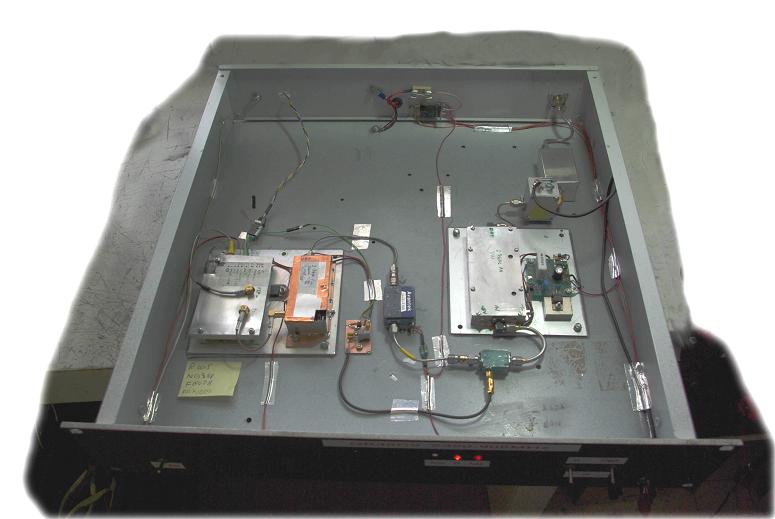The original version started off with a 96.7MHz crystal in a Butler oscillator followed
by a X4 multiplier to 387MHz in a single module. A clip on crystal heater
reducing oscillator drift over variations in external temperatures. The output
went to a second module, a modified DDK004, which further multiplied
the signal by X6 for the final output at 2320.905MHz.
The output from the DDK004 was fed to a cascaded pair of RF2126 devices
to generate 1 Watt of RF, then via a two stage comb filter to the output.
At the end of 15 metres of LDF-450 feeder it gave about 0.8W at the
antenna.
The antenna is a two electrical-wavelength-long Alford slot with an
estimated gain of 6dBi, giving an EIRP in the region of 3 Watts.
On-off keying of the beacon was generated by switching the power to the final
multiplier stage in the DDK004 with a PNP transistor. After some
experimentation with keying earlier multiplier stages, it was found that if
these were switched, the change in loading tended to get fed back to the
oscillator and cause the keying to chirp. The message data is generated
with a G0IAY/G4JNT PIC based keyer module which allows CW messages of
different speeds as well as programmable pause lengths to be embedded within
the single transmission.
Then, eventually, after all the other beacons had been locked to a master reference, GB3SCS followed suit...
This time a DDS followed by a PLL multiplier did the job.....
 And Now... Completely Rebuilt with JT4G and increased power
And Now... Completely Rebuilt with JT4G and increased power
Latest update
The GB3SCS driver based on DDS plus multiplier had spurious levels that caused problems with some local stations. So after
a session needed to cure a controller failure, the opportunity was taken to rebuild teh GB3SCS driver using an improved
solution with fewwer spurii. This uses Direct Upconversion allowing
a cleaner fixed frequency RF source to be used, modulated via quadrature upconverter chip with the WSJT modes generated separately,
at baseband. Q65-60D modulation, one of the latest from the WSJT suite, was adopted this time.
 This is how it started life....
This is how it started life....
 This is how it started life....
This is how it started life....